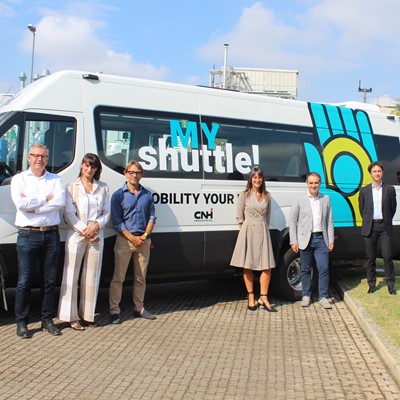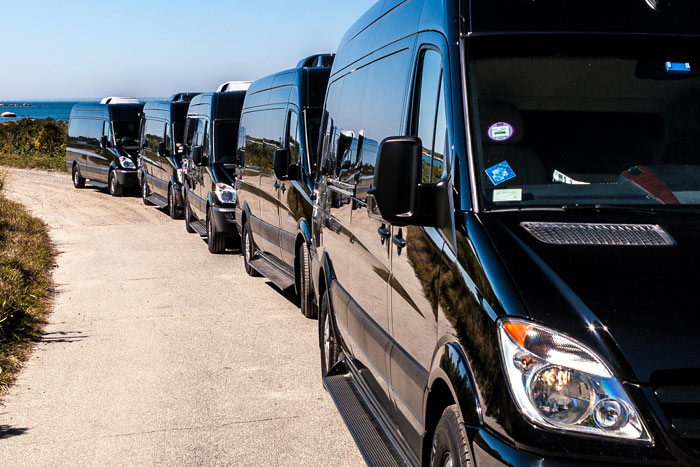Here are 10 great tips on how to choose the right vehicle size and capacity when it comes to shuttle services for employees.
1. Determine Employee Transportation Needs
Begin by conducting an in-depth assessment of your employee base to determine the number of employees that will use the shuttle service frequently. Consider factors such as your employees' base, shifts and work and peak hours of usage. These factors will help you determine the vehicle's capacity and ensure that the shuttles can manage a range of numbers.
2. Choose the Best Vehicle Type
Choose the best vehicles to serve your shuttle needs, based on the amount of staff and particular requirements. There are minibuses and vans available, as well as buses and vans that are larger. Minibuses are great for smaller groups and navigate tighter spaces, while larger buses are suited for large-capacity requirements. Look over the layout to see whether it has comfortable seating and room for luggage.
3. Evaluate Fuel Efficiency
The price of fuel could be a significant element in the planning of shuttle services. It is important to prioritize fuel-efficient vehicles so that they can reduce operating costs. Think about hybrid and electric vehicles as well, because they are more environmentally friendly and provide savings in the long-term. It is important to compare the efficiency of each model to help make an informed decision that balances cost-effectiveness and capacity.
4. Be aware of accessibility features
Ensure that selected vehicles comply with accessibility requirements to accommodate employees with disabilities. It includes features like wheelchair lifts, lower floors to enable people with mobility issues to get into the vehicle and seating specifically designed for people with disabilities. Accessible transportation isn't only required by law however, it also helps to create a more inclusive workplace.
5. Plan for expansion and flexibility
The size of the workforce can change as organizations grow. When selecting vehicles make sure you consider the possibility of expansion in the near future. When selecting vehicles, take into consideration the potential for growth in the future.
6. Find out more about safety features and ratings
Safety is a priority in the transportation of employees. If you're considering an automobile, be sure to study its safety features and ratings. Consider vehicles equipped with advanced technologies such as antilock braking and stability control as well as collision avoidance systems. Also, make sure that the vehicle is compliant with the federal and local safety standards to safeguard employees during transit.
7. Examine Maintenance and Reliability
Choose vehicles with low maintenance and high reliability. Vehicles that require frequent repairs could cause shuttle operations to be disrupted and employees to be dissatisfied. You can also establish a maintenance plan to maintain vehicles in optimal conditions and prolong their life.
8. GPS and Fleet Management Software
Your shuttle service could improve efficiency by implementing GPS tracking software and fleet software. These software tools offer real-time tracking and route optimization according to traffic patterns and employee schedules. Additionally, fleet management software permits you to track the performance of your vehicle, its maintenance, and fuel consumption. This will ensure that your vehicles are used efficiently.
9. Employ feedback mechanisms for employees
Encourage employees to provide feedback via surveys or suggestion box regarding the vehicle's comfort and capacity. The feedback from employees can help you spot any issues related to seating or accessibility. Monitoring their feedback frequently will help you make the needed adjustments to your vehicle or service to ensure a comfortable travel experience.
10. Budget for the total cost of ownership
The total cost of ownership also known as TCO is comprised of the purchase price along with maintenance expenses, insurance and depreciation. TCO analysis helps in making educated decisions that balance the beginning investment and long-term operational expenses. The costs of a vehicle can be analyzed to determine if it meets budgetary requirements while maintaining quality and reliability.
If they follow these suggestions, companies can select appropriate vehicles, ensure capacity and provide a safe, efficient and comfortable service to their employees. Read the best employee transportation for blog tips including airport rides, lax to anaheim shuttles, airport shuttle airport, shuttle bus near me, van transportation, shuttle to airport near me, airport shuttle from airport, nyc transporter, shared ride services, luxury transportation services and more.

Ten Top Tips About The Options For Vehicles And The Capacities Of A Business Transportation Service
Here are ten tips to help you choose the right vehicle for your corporate event transportation:
1. Evaluate Event Attendance Estimates
Estimate the number of people attending the event. This can be done using registration information, RSVPs, or historical attendance records. Knowing the expected number of participants can help you better plan your vehicle options and determine the amount of capacity that is required for transportation.
2. The Best Vehicle Types
Select appropriate vehicle types based on the estimated number of attendees and the type of event. Buses and shuttles with several seats are perfect for large parties. Luxury vans and sedans could work for smaller groups, or VIP attendees. A range of vehicles can ensure that attendees are transported comfortably.
3. Be aware of accessibility requirements
Make sure that all participants who are able to drive, even those with disabilities are able to access the vehicle. This could include choosing vehicles equipped with wheelchair lifts, or even low-entry options. Inclusion in transportation is not just in line with legal standards however, it can also enhance the overall experience of everyone involved.
4. Plan for multiple pick-up locations
If your guests are that are from various locations, it's recommended to arrange multiple pick-up points to make it easier for transportation. These could be central points, such as hotels, airports or transportation hubs. It is possible to increase the number of people who attend by accommodating multiple pickup locations and lessen logistical challenges.
5. Use a Reservation System
You should think about implementing a system of reservations for transportation services. This allows attendees to book their seats ahead of time, ensuring vehicles are adequately full and reduces the possibility of overcrowding. Reservation systems may be used to also adjust capacity according to actual demand.
6. Improve the Efficiency of Routes to Work
Choose the most efficient routes to get to and from the event in time. Analyze the traffic patterns and bottlenecks to create the most efficient routes for the vehicles. Utilizing route optimization could cut down on travel time and help in determining the most efficient routes.
7. Shuttle services available on demand
Think about offering on-demand shuttle services for large events. Participants can make requests for transportation at any time they'd like. This is especially useful when events are spread over several days and with various times. On-demand services can enhance flexibility and make sure that attendees have transportation when they need it.
8. Monitor Vehicle Capacity
Check the capacity of your vehicle during the event. It is important to monitor how many shuttles are full. This information can be utilized to make quick and efficient adjustments. The analysis of the data after the event will help in future plans.
9. Transport Information Must Be Communicated Clearly
Inform attendees about all details regarding transportation in good time before the event. Details on the type of vehicle along with pickup locations, schedules and times should be given. Making use of various communication channels, like email, event apps or printed material, ensures that attendees are informed of the transportation options available to them.
10. Get feedback from customers to improve future Services
Gather feedback from the guests on their travel experience following the event. This can include aspects such as the comfort of the vehicle, timeliness and overall satisfaction. The information gathered will allow to pinpoint what went well and what can be improved upon in future corporate events.
Implementing these strategies can help organizations effectively manage the capacity of their vehicles and provide seamless transportation for corporate events. Proper preparation and execution of the event will contribute to the overall success of the event, and also a positive perception of the company. Follow the best www.swoopapp.com/solutions/event-transportation-service transport for site info including transporters near me, reach logistics, logistics transportation, logistics transportation, international logistics, transportation and logistics services, transportation and logistics services, transportation management system, safe transportation, safe transportation and more.
